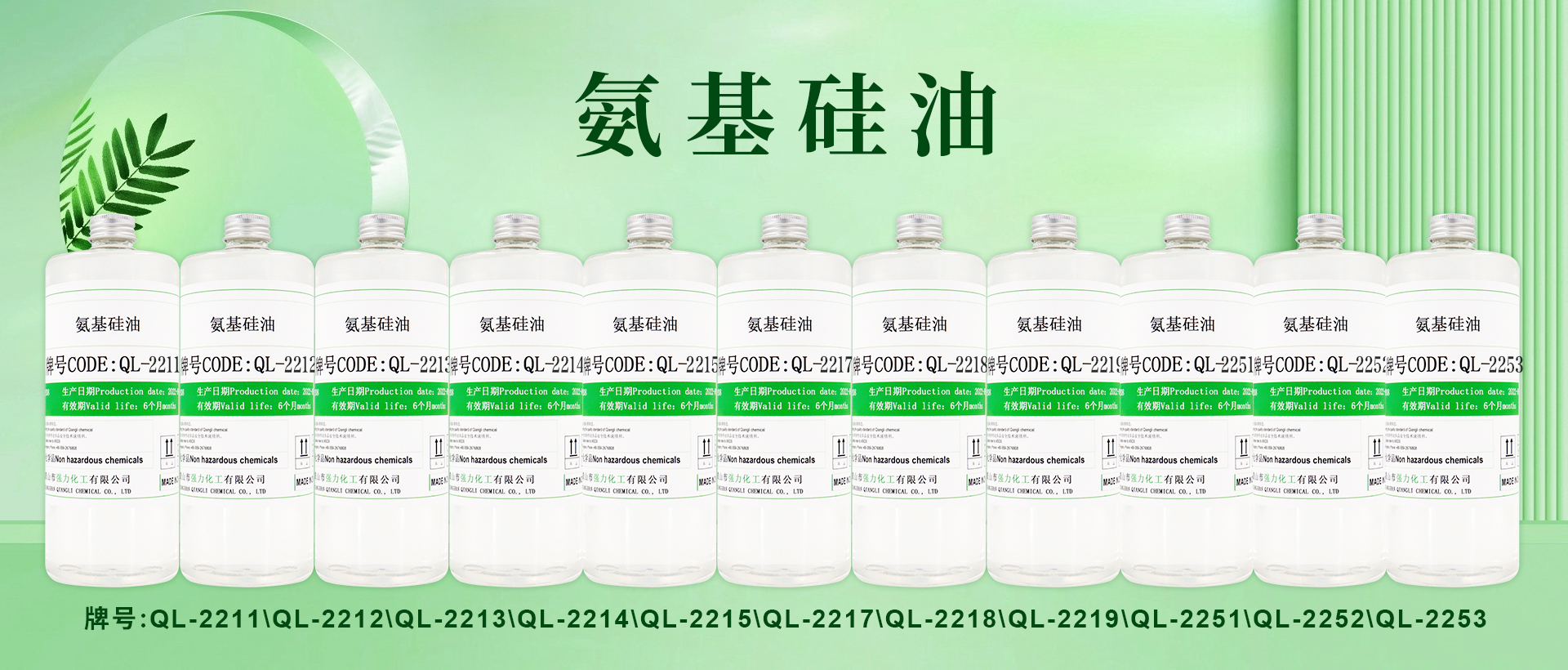Compound amino silicone softener is a chemical that improves fabric performance by adding other high molecular weight silicone oil components to the base amino silicone oil. This compounding method aims to enhance the softness, smoothness, resilience, wrinkle resistance and washing durability of fabrics.
1. Amino silicone oil softener compound
Amino silicone oil mixed with high molecular weight polydimethylsiloxane (methyl silicone oil) or high molecular weight amino silicone oil can significantly improve the softness and smoothness of finished fabrics. The molar mass of high molecular weight silicone oil should be controlled between 3×105~15×105g/mol-1 to ensure good adsorption and washing durability. The added amount is generally 0.1% to 5% of the amino silicone oil to ensure the effect and emulsification.
Compounding example:
Mix amino silicone oil with high molecular weight methyl silicone oil or amino silicone oil, and add surfactant and water to form an emulsion softener. Through impregnation and heat treatment, the softness, smoothness, wrinkle resistance and other properties of the fabric are improved.
Performance improvements:
Fabrics treated with compound emulsion have significantly improved smoothness, anti-wrinkle properties, compression recovery properties and tensile recovery properties.
Emulsification optimization:
To improve emulsification, compound emulsions containing high molecular weight dimethicone can be formulated using specific diluents to further enhance fabric style.
Antistatic and hydrophilic:
The hydrophobic nature of aminosilicone molecules can lead to poor water absorption and static issues in fabrics. By adding polyether-modified alkoxysilane, a cross-linking reaction can occur during fabric treatment, giving the fabric softness, smoothness, hydrophilicity and resistance to frictional electrification.
Examples of hydrophilic compounding:
Mix amino silicone oil and polyether modified alkoxysilane to prepare a hydrophilic amino silicone oil softener. Treated polyester/cotton blend fabric delivers superior antistatic properties and style.
2. Compounding of durable soft and smooth finishing agent
Amino silicone oil, as the main component, gives fabrics good softness and smoothness, but there is a problem of performance degradation after washing. By compounding with hydrogenated silicone oil, the -OH group at the end of the amino silicone oil molecule and the Si-H group in the hydrogenated silicone oil are used to form cross-linking and solidification on the fiber surface, which enhances the adhesion and durability of the finishing agent and improves smoothness. properties and resilience. The effect can be further optimized by adding α,ω-dihydroxydimethicone.
3. Compounding of anti-wrinkle soft finishing agent
Although traditional anti-wrinkle finishing agents, such as ethylenediamine ester, melamine resin and urea resin, have excellent anti-wrinkle effects and washability, they produce formaldehyde during the curing process, posing health and environmental risks. Propoxy-modified polyorganosiloxane and amino silicone oil are used to form a cured film on the fiber surface without the need for a catalyst. This compound finishing agent gives the fabric a soft, smooth style and excellent wrinkle resistance. It also has washing durability and does not produce formaldehyde during the entire treatment process.
4. Compounding of soft finishing agent with strong color effect
After dyeing, synthetic fibers such as polyester tend to have less bright colors than natural fibers such as wool, silk and cotton. By compounding amino silicone oil softener and polyethyl silicate, the rich color effect of polyester fiber dyed cloth can be significantly improved. As a cross-linking agent, the compounding ratio of polyethyl silicate and amino silicone oil should be controlled at 0.1~5 parts/100 parts of amino silicone oil to avoid affecting the softness. As a component to improve the rich color effect, the degree of polymerization of dimethyl silicone oil should be controlled between 20 and 500, and the dosage should not exceed 30 parts to ensure good compatibility with amino silicone oil. The selection of surfactants is also crucial. Nonionic surfactants with an HLB value of 13 to 15 should be selected to ensure the stability of the emulsion and the rich color effect.
5. Compounding of anti-shrinkage soft finishing agent
Animal fiber products such as wool are prone to felting and shrinkage after washing. By compounding cross-linkable amino silicone emulsion and silica hydrosol or methyl silsesquioxane liquid, an anti-shrink soft finishing agent can be prepared, which can significantly reduce the washing shrinkage of woolen products. Amino silicone oil not only gives the fiber softness, smoothness, gloss and lubricity, but also forms a cross-linked film on the fiber surface through its terminal hydroxyl or alkoxy group and silica hydrosol or methylsilsesquioxane, improving the fiber surface. Durability. The composition of amino silicone oil should include amino silicone oil containing hydroxyl or alkoxy groups, and amino silicone oil containing reactive groups at one end of the molecule or without reactive groups at both ends to adjust the hardness of the cross-linked film.
6. Compounding of anti-dye dissolution soft finishing agent
During the softening finishing process, the use of amino silicone oil emulsion formulated with non-ionic or cationic surfactants may cause the low-molecular disperse dyes on the polyester fiber to dissolve, affecting the dye fastness of the fabric. By using water-soluble cellulose ether or polyvinyl alcohol as an emulsifier, an amino silicone oil emulsion softener can be prepared, which can effectively solve the dissolution problem of disperse dyes, improve the dry rubbing fastness of dyed fabrics, and at the same time give the fabric the required softness. and smoothness.




